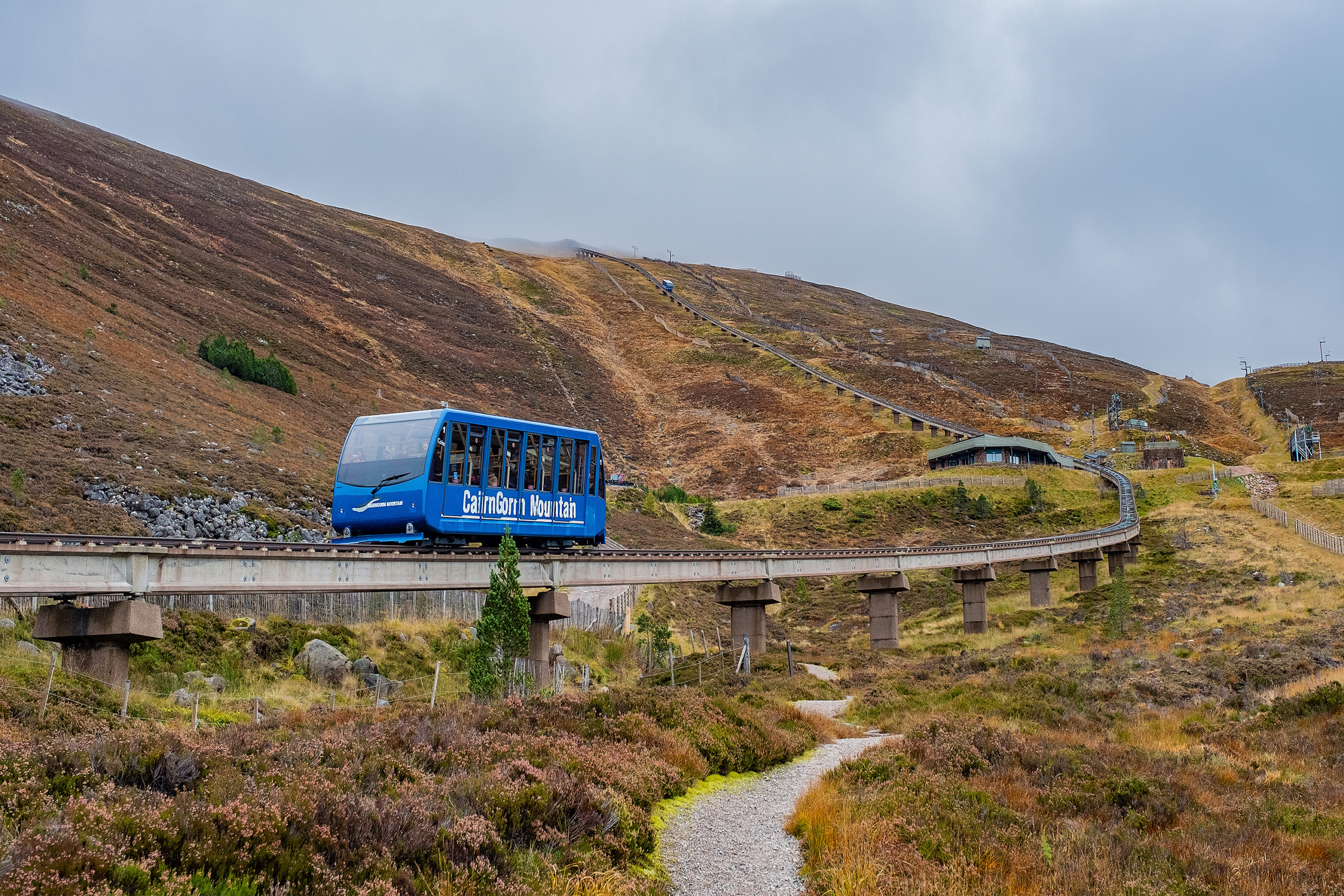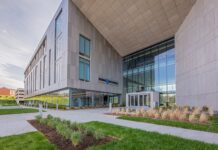
WORK to reinstate the Cairngorm funicular railway is entering the final stages in what has been said to be one of Scotland’s ‘most complex and challenging’ civil engineering projects in recent years.
Described as a ‘key attraction’ at the Cairngorm Mountain resort in Aviemore, the funicular railway first opened in 2001 before being taken out of service in late 2018 following a safety inspection.
Specialist engineering studies were undertaken to determine the condition of the structure and assess what would be required to resume safe operation, with a reinstatement of the existing structure being recommended.
Balfour Beatty was appointed to lead works by the Highlands and Islands Enterprise (HIE), with the firm now nearing completion of the programme of works required to strengthen the viaduct that supports the 2km track.
Originally planned to conclude in autumn 2021, HIE said that the construction timetable had to be extended due to multiple factors – including spring blizzards, impacts arising from Covid and Brexit, technical challenges, and ‘significant’ cost inflations.
As a result, HIE now estimates that the final cost of reinstating the funicular railway will be in the region of £25 million. This compares with £16.16 million that was originally budgeted as part of a wider capital investment package approved by the HIE board and the Scottish Government in 2020.
With construction works nearing completion, focus will now turn to engineers from Swiss company Garaventa/Frey, who are installing a new control system to ensure safe operations once the funicular comes back into service early in 2023.
Over the coming weeks they will lay fibre optic cabling and test the system repeatedly in live conditions. HIE explained that this means that Cairngorm Mountain trains are using the funicular track again for the first time in four years.
While work continues on the control system, car park improvements at Cairngorm Mountain are nearing conclusion. A new conveyor system is also being installed to provide uplift for snowsports beginners and, in future, family-friendly mountain biking.
The Ptarmigan building at the top station, which houses the UK’s highest restaurant, a shop, exhibition space and viewing platforms, has been given a major makeover too.
Dave Macleod, head of property and infrastructure at HIE, said, “The funicular reinstatement programme is undoubtedly one of the most challenging civil engineering projects currently taking place in Scotland. Essentially, it involves strengthening a series of 94 interconnected bridges which are part of a 2km structure, each with its own challenges and at high altitude in a difficult mountain environment. The loop section where the carriages pass one another on separate tracks is another feature that required a great deal of ingenuity to solve.
“Balfour Beatty have truly pulled out all the stops to reach this vital stage in the project and it’s really exciting to think that we are now looking at the prospect of passengers riding on this spectacular mountain railway again early next year.”
Hector MacAulay MBE, MD of Balfour Beatty Scotland, added, “We are delighted to have played a key role in the reinstatement of this iconic piece of infrastructure. As the project nears completion, we are excited to see the benefits the Cairngorm funicular railway will provide, enabling local residents and tourists alike to access the unique mountain environment all year round.”







